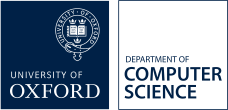Mathematical Methods: 2008-2009
Lecturers | |
Degrees | 2008: Michaelmas Term — MSc in Mathematical Modelling and Scientific Computing |
Term | Michaelmas Term 2008 (28 lectures) |
Overview
This course develops mathematical techniques which are useful in solving "real-world" problems involving differential equations, and is a development of ideas which arise in the second year differential equations course. The course aims to show in a practical way how equations "work", what kinds of solution behaviours can occur, and some techniques which are useful in their solution.
The course consists of the 6 lectures B568 Introduction to Applied Mathematics, the 14 lectures B5a Techniques of Applied Mathematics and a further 8 lectures on Mathematical Methods, details of which are given below.
Examination questions will be set on the whole course.
Learning outcomes
Students will know how differential equations can be used to model real-world phenomena and be able to describe the behaviour of the types of solutions that can occur. They will be familiar with the hysteresis and stability of ODEs and be able to solve Sturm-Liouville systems. They will develop the theory of PDEs, for example the modelling of shocks and the use of similarity solutions.Synopsis
B568: Introduction to Applied Mathematics
Modelling and conservation laws.
Scaling and non-dimensionalisation.
Asymptotic sequences. Regular and singular perturbation methods for algebraic equations. Simple boundary layer theory.
B5a: Techniques of Applied Mathematics
Nonlinear oscillations. Multiple scale methods.
Ordinary differential equations: hysteresis and stability.
Sturm–Liouville systems, comparison methods. Integral equations and eigenfunctions.
Partial differential equations: shocks, similarity solutions.
Supplementary Lectures
Introduction to distributions; the delta function.
Green's functions revisited.
Calculus of Variations; optimal control.
Reading list
- Coddington and Levinson, Theory of Ordinary Differential Equations. Chapters 3,7,8.
- Mattheij and Molenaar, Ordinary Differential Equations in Theory and Practice. Chapters 4,5.
- Hildebrand, Methods of Applied Mathematics. Chapter 4.
- Stakgold, Green's Functions and Boundary Value Problems. Chapters 1,2,3.
- Jordan and Smith, Nonlinear Ordinary Differential Equations. Chapters 8,9,10.
- Collins, Differential and Integral Equations. Chapters 1-4,8,9,11,12,14,15.
- A.C. Fowler 2005 Techniques of Applied Mathematics. Mathematical Institute lecture notes.
- J.P. Keener 2000 Principles of Applied Mathematics: Transformation and Approximation, revised edition. Perseus Books, Cambridge, Mass.
- E.J. Hinch 1991 Perturbation Methods. CUP, Cambridge.
- J.R. Ockendon, S. D. Howison, A.A. Lacey and A.B. Movchan 2003 Applied Partial Differential Equations, revised edition. OUP, Oxford.
- R. Haberman 1998 Mathematical Models. SIAM, Philadelphia.
- S.D. Howison 2005 Practical Applied Mathematics: Modelling, Analysis, Approximation. CUP, Cambridge (UK).
Taking our courses
This form is not to be used by students studying for a degree in the Department of Computer Science, or for Visiting Students who are registered for Computer Science courses
Other matriculated University of Oxford students who are interested in taking this, or other, courses in the Department of Computer Science, must complete this online form by 17.00 on Friday of 0th week of term in which the course is taught. Late requests, and requests sent by email, will not be considered. All requests must be approved by the relevant Computer Science departmental committee and can only be submitted using this form.
